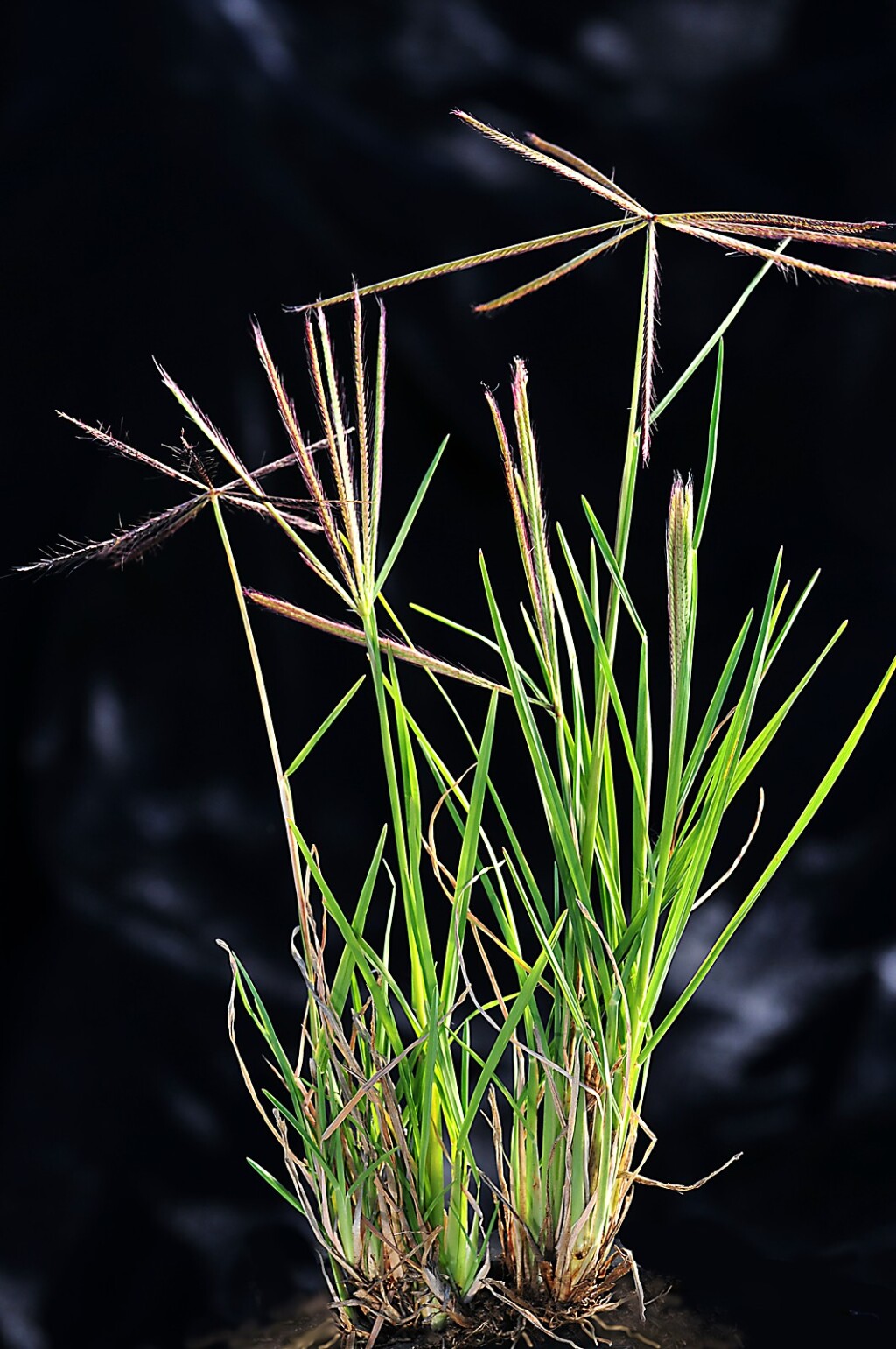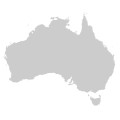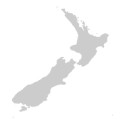Chloris truncata
R.Br. Windmill-grassTufted or occasionally stoloniferous perennial, culms erect, to c. 40 cm high; leaves glabrous, often somewhat glaucous; blade flat or folded, scabrous along margins and keel, to 15 cm (rarely more) long and 5 mm wide. Inflorescence an umbel of 5–10 spikes, 5–17 cm long, spreading stiffly horizontally or slightly reflexed at maturity. Spikelets with 2 florets, the lower bisexual, the upper sterile, both blackish at maturity; lower glume 1–2 mm, the upper 2–4 mm, sometimes mucronate; fertile lemma very obtuse or truncate, subequal to upper glume, membranous, sparsely ciliate along the upper margin, callus shortly bearded, otherwise glabrous, awn 5–15 mm long; sterile lemma cuneate, truncate, not or barely half as long as first and not or only weakly enclosed by it, awn of second lemma 2.5–5 mm long Flowers Nov.–Jun.
LoM, MuM, Wim, GleP, VVP, VRiv, MSB, RobP, MuF, GipP, OtP, Gold, CVU, GGr, DunT, NIS, EGL, EGU, HSF, HNF. All mainland states except NT. Occurs chiefly in grasslands on better soils mostly north of the Dividing Range, occasional in lightly timbered country on poor rocky or sandy soils. Locally abundant on the basalt plains near Melbourne and persisting in a few inner urban areas (e.g. Merri Creek and Studley Park). A colonizer of disturbed ground in suitable habitat.
Walsh, N.G. (1994). Poaceae. In: Walsh, N.G.; Entwisle, T.J., Flora of Victoria Vol. 2, Ferns and Allied Plants, Conifers and Monocotyledons, pp. 356–627. Inkata Press, Melbourne.
 Spinning
Spinning




